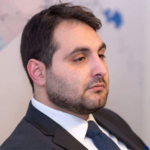It is important not to paint Iran’s all political actors with the same brush; whilst some branches are prone to violence and obsessed with creating an effective force to deter rivals and enemies in the region and beyond, others prefer to limit Iranian exposure to uncalculated risks and adventures. Qasem Soleimani was one of Iran’s most prominent engineers and strategists in the last decade and was largely in charge of preserving the countries geopolitical assets in the MENA region. His primary objective of defeating Iran’s rivals abroad was pursued by consolidating the dependency of various non-state actors on Tehran’s support, as well as creating others among non-traditional allies. In that regard, Soleimani could be partially attributed to the success of keeping Bashar al-Assad in power in Syria by preserving Hezbollah’s influence in Lebanon, expanding the autonomy of his Iraqi allies and placing the Houthis at the center of Yemen’s new political scene. Nevertheless, this strategy has also further exposed Iran to attacks from its rivals and eventually offered the USA an additional reason to sanction Tehran. The strategy also put increasing strain on the Iranian economy, which was incapable of financing ventures abroad while keeping the domestic economy afloat.
Therefore, the prospect of direct Iranian retaliation for Qasem Soleimani’s assassination could bring the country to full-blown confrontation with their regional rivals and global enemies at a time when the country is at its weakest and most sensitive in the last few years. The consequences of such confrontation, with no real guarantees of popular support, could theoretically shake the foundation of the incumbent regime and would definitely jeopardize its foreign ventures. The most likely Iranian response is a tolerated action within the limit of the USA’s margins of acceptance without risking an undecided escalation. Iran would only react differently if its leadership judges the integrity of its rule is at stake, and there is therefore nothing left to lose.
Over the last nine years, Soleimani was able to manage the IRGC’s objectives in Syria through the establishment of loyal Syrian non-state actors. Under the name of Local Defense Forces and the Islamic Resistance Army, these groups thrived in Aleppo and its southern and eastern countryside, as well as in the Qalamon, the Syrian desert, and along the southern bank of the Euphrates. The IRGC model entails commanding various grassroots movements to advance their agendas in the territories they control. The IRGC encourages them to enshrine their presence on a local level and to create a local economic structure which enables them to resist probing rivals and sustain itself in the case of a lack of Iranian financial support during times of hardship.
There are a number of reasons why the environment in which Soleimani created the IRGC offshoots in Syria was not ideal for replicating his previous successes in other countries: A large number of volunteers who joined the ranks of the Iranian-backed militias enlisted out of financial need or pragmatism. Additionally, the current groups have not enjoyed a long enough incubation period to re-enforce their ideological loyalty to the greater Iranian project. However, the biggest threat to Soleimani’s legacy in Syria is not necessarily external, but rather the lack of adhesion, and the relative lack of resistance to financial and moral corruption exercised by other local groups.
One further point to add is the recent visit of Vladimir Putin to Damascus, which was largely to prevent a possible scenario of Iranian-backed groups confronting the US forces. It is still possible that attacks on US local allies, more specifically the Syrian Democratic Forces (SDF) will be encouraged. However, this scenario seems unlikely as Tehran, led by the Democratic Union Party, still hopes to maintain a working relationship with the SDF. On many previous occasions, the Iranians have played a major role in appeasing differences between the Syrian PKK offshoot and the Syrian regime. One such example can be seen following the recent US decision to pull their forces out of Syria, when Rouhani and other Iranian officers called on the SDF to collaborate with the Syrian regime. Indeed, the only Iranian reaction in Syria would be to prevent exposure of their still nascent networks to a confrontation with the USA, especially with the lack of support from Russia and Bashar al-Assad for such a battle.


 Sinan Hatahet
Sinan Hatahet